Ecole des Bonnes Manières de Andong (안동예절학교)
10.0Km 2023-04-07
434, Gamae-ri, Waryong-myeon, Andong-si, Gyeongsangbuk-do
+82-54-841-0511
L'Ecole des Bonnes Manières de Andong, située dans la ville de Andong, est un haut lieu de la culture confucianiste en Corée. Elle permet de découvrir les bonnes manières du passé en Corée.
Vous pourrez aussi y apprendre l'étiquette lors de la cérémonie du thé et découvrir les mélodies traditionnelles à travers des instruments tels que le Janggu (tambour à double face) et le Gayageum (harpe coréenne à douze cordes) ainsi que découvrir les jeux folkloriques comme le Yut-nori et le cerf-volant. L'école propose un grand nombre de programmes: danse du masque, fabrication d'objets en papier traditionnel, cuisine traditionnelle, mariage traditionnel et rafting sur la rivière Nakdonggang.
Plusieurs sites touristiques se trouvent non loin de là comme l'école confucianiste Dosan Seowon, le musée des sciences sur la forêt et le centre littéraire Yi Yuk-sa.
Hakbongjongtaek [Korea Quality] / 학봉종택 [한국관광 품질인증]
10.7Km 2023-04-13
2830-6, Pungsantaesa-ro Seohu-myeon, Andong-si, Gyeongsangbuk-do
+82-54-852-2087, +82-10-6811-1106
'Hakbong Head House is the head house of the Uiseong Kim clan and was originally built near Sogyeseodang Village School by Kim Gwang-chan, an 8th-generation descendant of Hakbong Kim Seong-il, in 1762. In 1964, the house was moved to its current location.
The main building (bonchae) was extended from a ‘ㅁ’-shaped structure to a ‘巳’–shape structure. The anchae (women’s quarters) consists of a daecheong (main floored room) measuring 2-kan (a unit of measurement referring to the distance between two columns) on the right, an anbang measuring 2-kan on the left, and kitchen at the end. The upper part of the low-ceilinged kitchen has a gobang (storeroom) in which household goods used to be stored. The daecheong is large compared to the overall size of the house because head houses usually held many ancestral rites.
The Hakbong Head House has an impressive modern garden that was created during construction work carried out when the house was relocated after the Japanese colonial era. The well-maintained garden with its fantastically-shaped trees and rocks also serves as a venue for musical concerts on a regular basis. Guests will surely be fascinated to find out about the history of the people who once inhabited this house and dedicated themselves to the country in times of trouble.
Bap Jal Haneun Jip (밥잘하는집)
11.5Km 2021-03-26
31, Gwiyeori-gil, Andong-si, Gyeongsangbuk-do
+82-54-852-0010
It is a place where you can enjoy various Korean dishes. This Korean dishes restaurant is located in Andong-si, Gyeongsangbuk-do. The representative menu is beefbulgogi.
An dong gotak Esanru [Korea Quality] / 안동고택 이상루 [한국관광 품질인증]
11.5Km 2020-09-10
3193-6, Pungsantaesa-ro Seohu-myeon, Andong-si, Gyeongsangbuk-do
+82-54-843-3328 / +82-10-3522-1542
'Andong City in Gyeongsangbuk-do Province is a town of culture and folk traditions where one can trace the long history of eminent families. It is also a symbol of time-honored tradition to the extent that the name Andong reminds people of traditional Korean hanok houses. Isangru, an ancient hanok house with a history of 2,590 years, located in the foothills of Mt. Cheondeungsan, served as a venue for the memorial rite for Kim Seon-pyeong, the progenitor of the Andong Kim clan and a meritorious government official during the reign of King Taejo of the Goryeo Dynasty. Isangru, meaning ‘a tall majestic building built on frosty ground’, is a two-story wooden building with a tiled roof characterized by elegant curves that form a half-hipped shape when viewed from the side. The house consists of two accommodations, Taejangtaesa and Isangru, arranged in a ‘ㅁ’ shape. The large door located in the middle of the ground floor offers an open view of the beautiful natural environment including a pine grove, a pond, and wild flowers. Built in 1750, this hanok house shows its age in its wooden pillars, stone walls, and interiors decorated with wooden engraving on the handrail. Guests can stay in a room heated with wood in winter, or in a tent for a different experience in summer. The house has been well maintained with various repair works, and underwent extensive renovations, including the wallpaper and floors, in 2013. Although it is close to a road, the house is surrounded by old trees, creating the impression that it is situated in the middle of a dense forest. A path runs between ancient pine trees on the road leading to the house. There is a pond with water lilies and white lotus flowers in front of the house, while various species of wild flowers including big blue lily turf, plantain lily, montane aster, and asters come into full bloom around the house in their respective seasons. Fully maintained by the Andong Kim clan, Isangru is a large structure that can accommodate many people and is used to hold clan assemblies. This tall building is also used as a venue for concerts, seminars and traditional hands-on experience programs for students, including tea ceremony, masked dance, natural dyeing, hanji (Korean paper) crafts, and filial duty education programs. The house also offers guests a traditional nobleman’s dining table including various wild vegetable dishes for breakfast. Isangru is popular among Korean and foreign guests who want to experience traditional Korean culture or enjoy a relaxing stay with their parents amid beautiful nature. In addition, it is located between Hahoe Folk Village and Dosanseowon Confucian Academy in Andong, and offers easy access to other nearby tourist attractions including Bongjeongsa Temple, which is the oldest wooden building in Korea and is just three minutes’ drive away, and the two-hour-long Dulegil Trail.
Yedam (예닮)
11.7Km 2021-03-30
78-28, Gwiyeori-gil, Andong-si, Gyeongsangbuk-do
+82-54-842-3131
A restaurant frequently introduced in Korean gourmet programs. The best menu at this restaurant is set menu with grilled salted mackerel. This Korean dishes restaurant is located in Andong-si, Gyeongsangbuk-do.
Village Gunja à Andong (Site des reliques Ocheon) (안동 군자마을(오천유적지))
11.9Km 2021-03-16
29, Gunjari-gil, Waryong-myeon, Andong-si, Gyeongsangbuk-do
+82-54-852-5414
Le site historique Ocheon est un village reconstitué lors de la construction du barrage Andong en 1974. Le village originel fut fondé par Kim Hyo-Ro, ancêtre de la branche Yean de la famille Kim de Gwangsan, et habité pendant 600 ans par ses descendants.
Dans ce site se trouvent des biens culturels nationaux tels que Takcheongjeong et Hujodang (voir plus bas).
Le site inclut le musée Sungwongak où sont exposés de précieux documents rédigés par les membres connus de cette famille ainsi que les actes d'état civil et divers titres de possessions de terres et d'esclaves. Parmi eux ont été déclarées "trésor" par l’Etat coréen 7 catégories de documents anciens répartis dans 429 pièces différentes et 13 catégories de livres des records englobant 61 volumes.
Takcheongjeong
C’est un pavillon annexé à la maison principale de la branche Yean de la famille Kim de Gwangsan. La maison a été construite en 1541. Pour un bâtiment de ce genre, il est plutôt majestueux et imposant, ce qui le fait considérer comme un important bien culturel. La plaque portant le nom du bâtiment a été placée sous le toit et au-dessus de la porte de l’immeuble. Elle a été écrite par Han Ho, un des trois grands calligraphes de la dynastie Joseon.
Hujodang
C’est une résidence secondaire appelée Byeoldang. Elle est annexée à la maison principale de la branche Yean de la famille Kim de Gwangsan. L’année de sa construction est ignorée, mais on sait qu'elle a été élevée par Kim Bu-Pil (1516~1577).
Immeuble séparé de la maison principale, un Byeoldang se divise en deux zones : Byeoldang extérieur et Byeoldang intérieur.
La première était utilisée pour le repos et la méditation des hommes de la maison, alors que la seconde était destinée aux grand-mères ou aux filles approchant l’âge de se marier.
Hujodang est un Byeoldang extérieur.
Jeongjae Head House [Korea Quality] / 정재종택 [한국관광 품질인증]
12.3Km 2023-04-13
경상북도 안동시 임동면 경동로 2661-8
+82-10-8590-0625
Boasting more than 300 years of tradition, Jeongjae Traditional House is the head house of Ryu Chi-myeong (pen-name: Jeongjae), who inherited the study of Togye Yi Hwang (1501-1570), one of the two most prominent Korean Confucian scholars of Joseon. The old house features the characteristic construction elements of a Joseon hanok, including the stylobate, wooden pillars, toenmaru (the narrow wooden porch running along the outside of the building), tiled roof, and other structures, and commands an open view of Imha Lake. The house was originally built by Ryu Gwan-hyeon, the great-great-grandfather of Ryu Chi-myeong, in 1735 (the 11th year of the reign of King Yeongjo of Joseon) in the village of Handeul in Imdong-myeon, Andong-si, Gyeongsangbuk-do, but it was relocated to the foot of Guamsan Mountain in 1987 when Imha Dam was built and the surrounding area was submerged as a result. The house consists of the daemunchae (gate building), jeongchim (a ‘ㅁ’-shaped house with a tiled roof), haengnangchae (servants’ quarters), a shrine, and a pavilion. The sarangchae (men’s quarters) is clearly visible, while the anchae (women’s quarters) is concealed within the house. The sarangchae has a sarangmaru (wooden floor), a large sarangbang room, a small sarangbang room, and there is a small maru between the two rooms. The buildings of the sarangchae and anchae are clearly divided into segregated spaces for men and women according to Confucian tradition. The anchae has a daecheongmaru (large wooden floor) in the middle; a main room, kitchen, and toilet on the right; and a numaru (upper floor) and sangbang (upper room) on the left. The small side door of the main gate links to the door by which to enter the anchae, which has a small vegetable garden. Manujeong Pavilion (Gyeongsangbuk-do Cultural Heritage Material No. 37) is a half-hipped roof building with single-layered eaves located on the left side of the house outside the main gate. It is the place where Ryu Chi-myeong used to teach his students, and consists of a large maru and a guest room. The pavilion is also surrounded by the beautiful scenery of Imha Lake, mountains, and chestnut trees. Jeongjae Traditional House provides two special experience programs: Making Songhwaju, which is the Ryu family’s home-brewed liquor (15 to 18 degrees) made with rice, glutinous rice, yeast, pine needles, and chrysanthemums, led by the owner’s wife (Intangible Cultural Asset No. 20); and Making Tarak, which is a fermented milk drink that has been made by the Ryu’s family for some 500 years. As the recipe for making Tarak is relatively simple, and uses yeast that is usually used to make raw rice wine like Makgeolli, people can easily make it at home. The house also runs a traditional music program designed to show participants how to play the gayageum (Korean zither with twelve strings) and sing Korean folk songs, and stages small concerts.
Imhaho Gisa Sikdang(임하호기사님식당)
12.6Km 2021-04-09
8, Seonchakjang-gil, Andong-si, Gyeongsangbuk-do
+82-54-822-4929
There are a variety of side dishes, so you can enjoy different foods. This Korean dishes restaurant is located in Andong-si, Gyeongsangbuk-do. The representative menu is kimchi stew.
Byeolcheongung (별천궁)
12.9Km 2021-03-30
141, Bongjeongsa-gil, Andong-si, Gyeongsangbuk-do
+82-54-857-4168
It is a restaurant with a hanok interior. This restaurant's signature menu is set menu with grilled salted mackerel. This Korean dishes restaurant is located in Andong-si, Gyeongsangbuk-do.
Hakgasan Chamma Sikdang(학가산참마식당)
12.9Km 2021-04-09
677, Bukpyeong-ro, Andong-si, Gyeongsangbuk-do
+82-54-868-7456
It is a good house with delicious dishes including fresh yams, where side dishes are cooked every morning. This Korean dishes restaurant is located in Andong-si, Gyeongsangbuk-do. The most famous menu is bulgogi.

![Hakbongjongtaek [Korea Quality] / 학봉종택 [한국관광 품질인증]](http://tong.visitkorea.or.kr/cms/resource/87/2579587_image2_1.jpg)
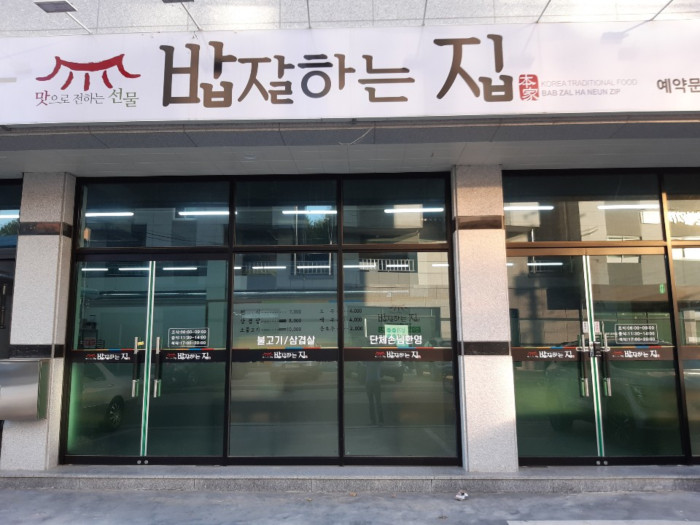
![An dong gotak Esanru [Korea Quality] / 안동고택 이상루 [한국관광 품질인증]](http://tong.visitkorea.or.kr/cms/resource/65/2579465_image2_1.jpg)
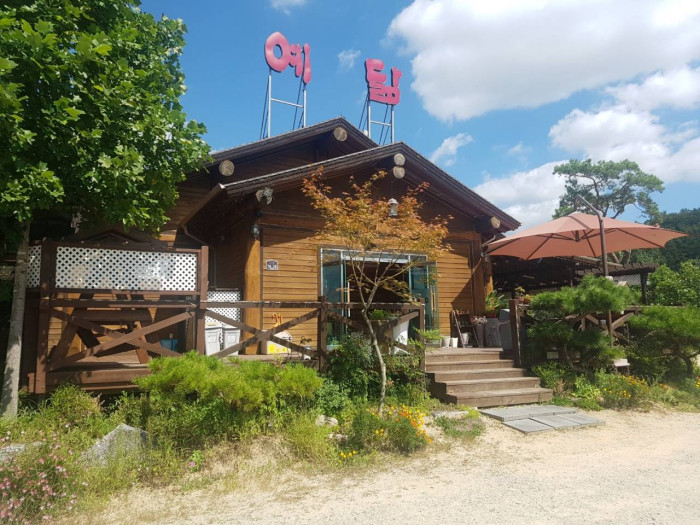
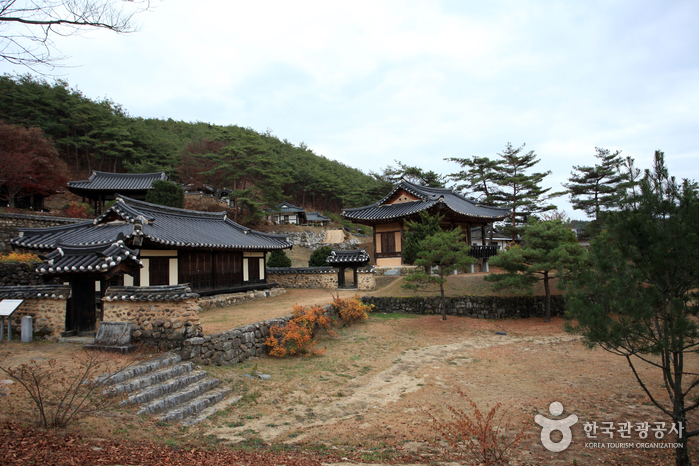
![Jeongjae Head House [Korea Quality] / 정재종택 [한국관광 품질인증]](http://tong.visitkorea.or.kr/cms/resource/96/2579496_image2_1.jpg)
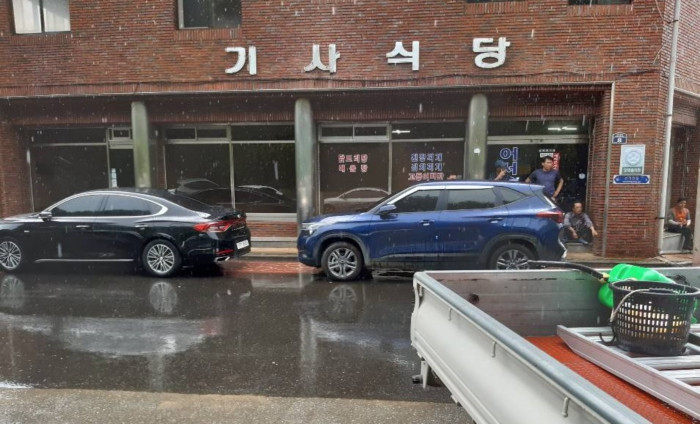
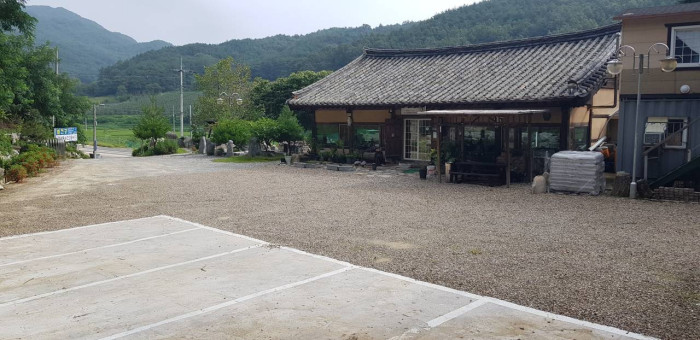
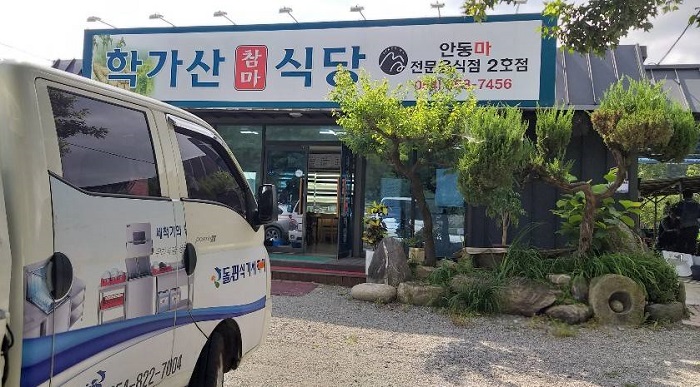
 Français
Français
 한국어
한국어 English
English 日本語
日本語 中文(简体)
中文(简体) Deutsch
Deutsch Español
Español Русский
Русский